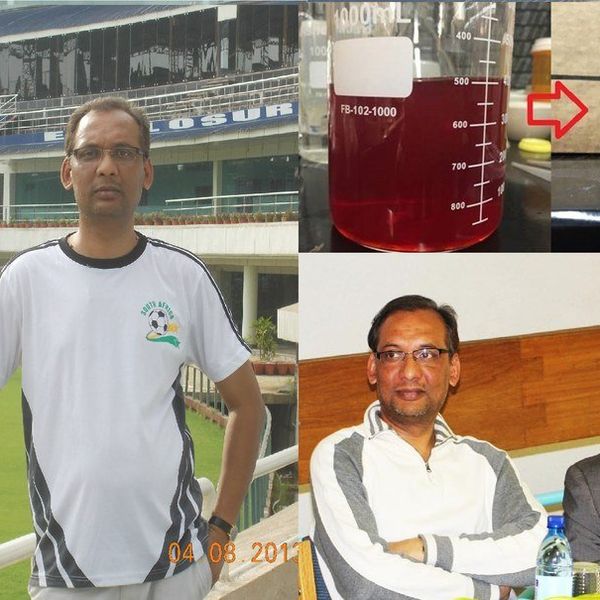The Little Calumet
The Little Calumet has been subjected to human and industrial mismanagement for years: urban runoff, landfills, dumping, industrial manufacturing and processing, and sewage treatment plants. Sections of the Little Calumet can support nothing but sludge worms. The soil surrounding the river has tons of bacteria, cyanide, lead, arsenic, oil, grease, and many more substances that are harmful to the environment. In the mid 1980’s the river (as well as the Grand Calumet) were marked as one of 40 “areas of concern” by the EPA. Companies responsible for the water quality of the Little Calumet (and Grand Calumet) were fined $56 million to aid in cleanup costs that the helped create.
The overall goal of testing the quality of the Little Calumet is to see whether or not the water has become safe enough to use. This means that we as humans would be able to drink it and the river would be a safe and healthy home for plants and animals. The tests that supported the idea that the Little Calumet was safe and healthy was the alkalinity and phosphorus. The other tests that were performed, which were a nitrate test, turbidity, pH and checking the dissolved oxygen levels. Overall, with the tests that were performed, roughly 40% of the river is improving and 60% of the river still needs some work done in order to maintain a healthy environment.
The sample of the Little Calumet water was taken right across the street from Indiana University Northwest. The water was collected from over a bridge that was built above the water. This location was picked because it was a convenient location for where we ran the tests. The bridge that was over the Little Calumet has cars that drive on it just about 24/7. Because of that, the pollution from cars could affect the water the most. Therefore, receiving a sample of the river from this location allows us to test the water at its worse environment.
Two bottles of Little Calumet River water were taken and 6 tests were run on the samples.
- Dissolved Oxygen was one test. It was tested that we had 4.3ppm of dissolved oxygen in our water. 5-6ppm is sufficient amount of oxygen, 5-3ppm of dissolved oxygen is stressful to most aquatic species, and 2 and below ppm of oxygen is fatal for most species.
- pH is very common in water testing since pH is excessively important to body functions. We are told a pH range of 6.5 to 8.2 is optimal for organisms. The level we found was 8.5 pH. In the chart supplied we are told that 8.2-9.0 is not directly harmful to fish and wildlife, yet can cause indirect effects. Indirect effects are like changing the water chemistry. That means toxic metals are released into the water and can affect the toxicity of ammonia to fish.
- Phosphate. This test was run by adding 10 mL of river water into a test tube, adding in an indicator tablet, shaking up (with a lid) and letting it settle and change color (if change) for 5 minutes. You put into a viewer which has different colors you could possibly see and you compared the color you have in your test tube to the color for different concentrations of phosphates in the water. Higher than .03 ppm of phosphate and lower than .1 ppm, is a healthy river environment.
- Alkalinity is how much of a buffer the water is. Alkalinity was tested by filling a beaker with 5 mL of river water add in a tablet, and then titrate it. The amount of titrant used is how to determine the health level. We achieved the level of 200 ppm, which is considered a healthy range.
- Nitrate levels were high compared to what they should be. High Nitrate content can be bad for life.
- Turbidity is how clear the water is. If water is cloudy what determines this is particles suspended in the water. This helps determine the amount of light can get through the water. The little calumet has a very high turbidity.
Dissolved Oxygen | 4.3 ppm (30%) |
pH | 8.5 |
Alkalinity | 200 ppm |
Nutrients (Nitrate) | 2.2 ppm |
Nutrients (Phosphate) | 0.4 |
Turbidity | 30 NTU |
Most groups got that the water quality for the Little Calumet was still low, while our results show that the river is on the mend. The river still needs improvement on 60% of our tests, and 40% of it is just passing.
Our hypothesis of The Little Calumet being on the middle to high end of restoration, we were slightly off. We thought it would be in a bit better condition then we inspected. It takes many years to undo the damage that was done to the Little Calumet.
The water still needs improvement and so Indiana University Northwest still should be vigilant over the river and its quality. To remove some of the infected sentiment with lead and other harmful substances (and that may also raise pH) we need to continue sediment remediation, finding more sources of leaking and runoff into the river (petroleum tanks, storm sewers). This alongside planting more plants to absorb runoff around river beds and other green solutions.





















